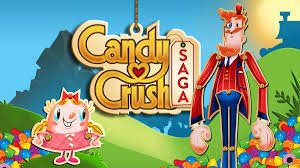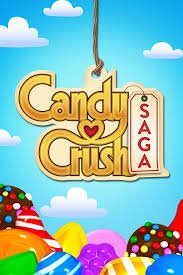Candy Crush Saga is one of the most iconic mobile games of all time, boasting millions of active players worldwide. Developed by King, the game launched in 2012 and quickly became a cultural phenomenon, captivating players of all ages. Its simplicity, addictive gameplay, and strategic challenges have contributed to its enduring popularity. Let’s delve into the factors that have fueled the craze behind Candy Crush Saga.
Critical Question – What is the success behind a Game? How can be a Game can be popular and successful?
1. Simple and Addictive Gameplay
• Match-3 Puzzle Mechanics:
Candy Crush offers a straightforward match-3 puzzle game where players match candies of the same color to progress through levels. The gameplay is intuitive—swap adjacent candies to create combinations—making it easy for anyone to pick up and play.
• Progressive Challenge:
As players advance through levels, the difficulty gradually increases with added obstacles such as locked candies, jelly, chocolate, and timed moves. This progression keeps players engaged, providing a sense of accomplishment and motivation to solve increasingly complex puzzles.
2. Strategic Element
• Tactical Thinking:
Candy Crush is not just about matching candies but also requires strategy. Players need to think ahead to plan moves that will create powerful combos and maximize their moves within limited turns. This aspect of strategy makes the game more engaging and rewarding.
• Power-ups and Boosters:
The introduction of boosters like striped candies, wrapped candies, and color bombs adds an element of skill, allowing players to navigate difficult levels with smarter moves. These power-ups offer unique advantages, making each level more exciting.
3. Progression and Rewards
• Level System:
Candy Crush features a level-based system where players progress by completing stages. With over 10,000 levels available, the sense of achievement upon beating a level motivates players to keep going. Every completed level feels like a milestone in the journey, making players invested in the game’s narrative.
• Rewards and Milestones:
Players receive rewards, such as boosters, extra moves, and life replenishers, which encourage continued engagement. Regular updates with new levels, events, and challenges maintain a fresh and dynamic gaming experience.
4. Social Integration and Competition
• Multiplayer and Leaderboards:
Candy Crush allows players to compete with friends, track their progress, and climb global leaderboards. Social integration adds a layer of competitive spirit, as players strive to outdo their peers and achieve higher scores. This sense of community and rivalry enhances engagement.
• Sharing and Encouragement:
Players often share their achievements and progress with friends on social media platforms, further extending the game’s reach and fostering a supportive community. Friends can send lives and boosters, which creates a cycle of interaction and cooperation.
5. Microtransactions and Monetization
• In-App Purchases:
Candy Crush monetizes through in-app purchases where players can buy boosters, extra moves, or lives to overcome challenging levels. The freemium model offers players a way to enhance their gaming experience, but it also encourages strategic spending to progress faster.
• Time Management:
Limited lives and waiting times encourage players to make purchases for continued gameplay. This psychological aspect of scarcity and the ability to bypass restrictions with payments has played a significant role in Candy Crush’s revenue generation.
6. Accessibility and Platform Availability
• Available on Multiple Platforms:
Candy Crush Saga is accessible across a variety of devices, including smartphones, tablets, and even Facebook. Its availability on multiple platforms ensures that players can enjoy the game anytime, anywhere.
• Global Reach:
With localized content and frequent updates, Candy Crush has become a global phenomenon. The game has been translated into several languages, making it accessible to players from different cultural backgrounds, enhancing its widespread appeal.
7. Psychological Engagement
• Rewards and Dopamine Release:
Candy Crush taps into the psychological aspect of reward systems by releasing small doses of dopamine with each successful match. Completing levels and achieving milestones gives players a sense of accomplishment, encouraging them to return for more gameplay.
• Short Sessions:
The bite-sized nature of Candy Crush makes it perfect for quick gaming sessions during commutes, breaks, or leisure time. This accessibility fosters regular, daily engagement.
8. Innovative Updates and Constant Evolution
• Constant Updates:
King consistently updates Candy Crush with new levels, events, and features, keeping the game fresh and preventing stagnation. This evolution ensures that players always have something new to look forward to, maintaining their engagement.
Conclusion
Candy Crush Saga’s immense popularity is driven by a combination of simple yet addictive gameplay, strategic depth, social integration, and continuous innovation. Its ability to cater to both casual and dedicated gamers has solidified its place as one of the most beloved mobile games of all time. Whether through individual challenges or social competitions, Candy Crush continues to capture the hearts and minds of millions around the world.




